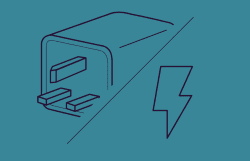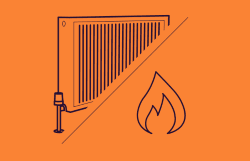Together Energy: the latest UK supplier to go bust
We regret to inform you that the company will cease trading with immediate effect. We want to thank you sincerely for your custom over the past 5 years,’ says the website of Together Energy, a UK supplier that ceased to trade last week.
The decision was announced as the UK is facing an energy crisis and wholesale energy prices are getting higher and higher. Increasing numbers of suppliers struggle to purchase energy and make a profit.
Contrary to some voices that could lately be heard in the media, Together Energy said that the company purchased enough gas and electricity for the demand of its customers. Unfortunately, though, as the prices are expected to keep rising, trading was no longer sustainable.
Following the collapse of Total Energy, its subsidiary Bristol Energy also went bust.
What will happen to the customers of Together Energy?
If you were a customer of Together Energy, your first reaction might be to panic. Luckily, as it is not the first supplier to go bust this year, Ofgem is ready to assist those affected. In fact, Ofgem has developed a safety net for customers of providers that decided to stop trading. Hence, in the case of Together Energy, 176 000 households that the supplier delivered energy to will be appointed a new supplier by Ofgem.
Ofgem advises customers not to change suppliers themselves but instead wait to find out what their new supplier will be. Once the process is finalised, energy consumers have the right to pick a different energy supplier. Switching before Ofgem appoints a new one, however, could result in unwanted disruptions to the supply.
During the process of transferring former customers of Together Energy to another supplier, the energy supply will continue as normal so, if that concerns you, there is no need to worry about not having gas or electricity for a while. Similarly, if you have an appointment scheduled to get a smart meter installed, it will go ahead as planned.
What other UK suppliers have gone bust recently?
Since January 2021, ‘27 UK suppliers have gone bust, affecting 4.4 million households,’ the Guardian reported.
Here is the list of all suppliers that stopped trading, sorted from the first that went bust until the most recent one. The table also includes information regarding the number of households the companies used to supply energy to.
| Supplier | Households |
| Simplicity Energy | 50,000 |
| Green Network Energy | 360,000 |
| Hub Energy | 6,000 |
| MoneyPlus Energy | 9,000 |
| PFP Energy | 82,000 |
| Utility Point | 220,000 |
| People’s Energy | 350,000 |
| Green | 255,000 |
| Avro Energy | 580,000 |
| Symbio Energy | 48,000 |
| Igloo Energy | 179,000 |
| ENSTROGA | 6,000 |
| Colorado Energy | 15,000 |
| Pure Planet | 235,000 |
| Daligas | 9,000 |
| GOTO Energy | 22,000 |
| Bluegreen Energy | 5,900 |
| Ampower | 600 |
| Zebra Power | 14,800 |
| Omni Energy | 6,000 |
| Social Energy | 5,500 |
| Neon Reef | 30,000 |
| Bulb Energy | 1,700,000 |
| Entice Energy | 5,400 |
| Orbit Energy | 65,000 |
| Zog Energy | 11,700 |
| Bristol Energy | 176,000 |
Will the energy crisis continue throughout 2022?
As the energy crisis is showing no signs of stopping, it is likely that even more suppliers will go out of business soon. In addition to energy companies being pushed to bankruptcy, consumers see energy bills higher than ever before.
Energy prices are expected to rise by as much as 50% in April. That means that many households around the UK might find themselves struggling to pay their bills. If a household has little to no money left after paying its utility bills, they are dealing with what is called fuel poverty.
‘Until recently, the usual definition of fuel poverty was that a household was considered to be in fuel poverty when it needed to spend more than 10% of its income on fuel,’ Turn 2US explains. The definition was updated a few years ago, however. Now, ‘a household is said to be in fuel poverty if they have required fuel costs that are above average (the national median level), and were they to spend that amount they would be left with a residual income below the official poverty line,’ Turn 2US adds.
The main drivers of fuel poverty are the cost of energy, the total income of the household, and their energy efficiency.
As energy prices in the UK keep rising, even households with an income higher than average might be pushed into fuel poverty.
Unfortunately, currently no one knows when the crisis will end. Sadly, it is likely that it will continue not only throughout but well beyond 2022.




